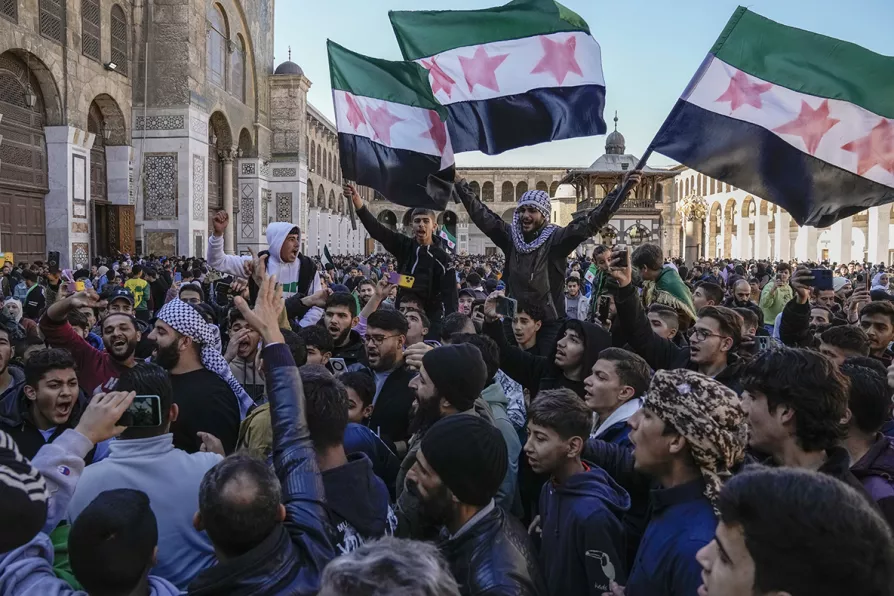New Syrian authorities stage celebratory rallies in Damascus as US and Turkey plan country's future

 Syrians wave the country's new flag as they gather for Friday prayers at the Umayyad mosque in Damascus, Syria, December 13, 2024
Syrians wave the country's new flag as they gather for Friday prayers at the Umayyad mosque in Damascus, Syria, December 13, 2024
THOUSANDS of Syrians gathered in the capital Damascus today in rallies called by its new rulers to celebrate the fall of Bashar al-Assad, as the United States and Turkey “broadly agreed” on their plans for the country.
US Secretary of State Anthony Blinken met allies in Jordan, Turkey and Iraq to shape the transition of Syria’s leadership, calling for an “inclusive and non-sectarian” interim government.
After talks with Turkey’s Foreign Minister Hakan Fidan, Mr Blinken said there was “broad agreement” between Turkey and the US on what they would like to see in Syria.
Similar stories

VIJAY PRASHAD reflects on the latest developments in Syria and what they mean for the Middle East













